Abstract
1. Experiments were performed in cats anaesthetized with pentobarbitone. Laser Doppler flowmetry was used to assess the responses of knee joint blood vessels to nerve stimulation under control conditions and in the presence of different adrenoceptor antagonists in order to establish the nature of neurotransmitters released from articular nerve fibres. 2. The posterior articular nerve (PAN) supplying the knee was stimulated at different intensities, and frequency-response curves were obtained. In fourteen animals electrical stimulation of PAN produced an initial vasoconstriction during stimulation which in eight of these was followed by a prolonged dilatation on cessation of stimulation. The constrictor response was increased as a function of frequency but was little altered with increasing intensity beyond a threshold level. 3. The constrictor response to electrical stimulation of PAN was markedly reduced by the alpha-adrenergic antagonist phentolamine (10(-5) M, the alpha 1-blocker prazosin (10(-5) M), and guanethidine (10(-5) M) which inhibits the release of noradrenaline, ATP, and neuropeptide Y from sympathetic nerve endings. 4. The constrictor response to PAN stimulation was unaffected by the alpha 2-blocker rauwolscine and the P2-purinoceptor desensitizer alpha,beta-methylene ATP. 5. The dilator response was due to activation of afferent fibres as it could also be produced by direct electrical stimulation of the L7 dorsal roots. 6. The dilator response to stimulation of PAN or the L7 dorsal root was reduced by prior intra-articular injection of 100 micrograms of the substance P antagonist D-Pro4-D-Trp7,9,10-SP4-11. 7. These results suggest that the vasoconstrictor response to electrical stimulation of PAN is most likely to be mediated via noradrenaline acting mainly upon alpha 1-adrenoceptors. As the dilator response to articular nerve stimulation is reduced by a substance P antagonist, the mediator inducing this response may be substance P or a related neurokinin.
Full text
PDF
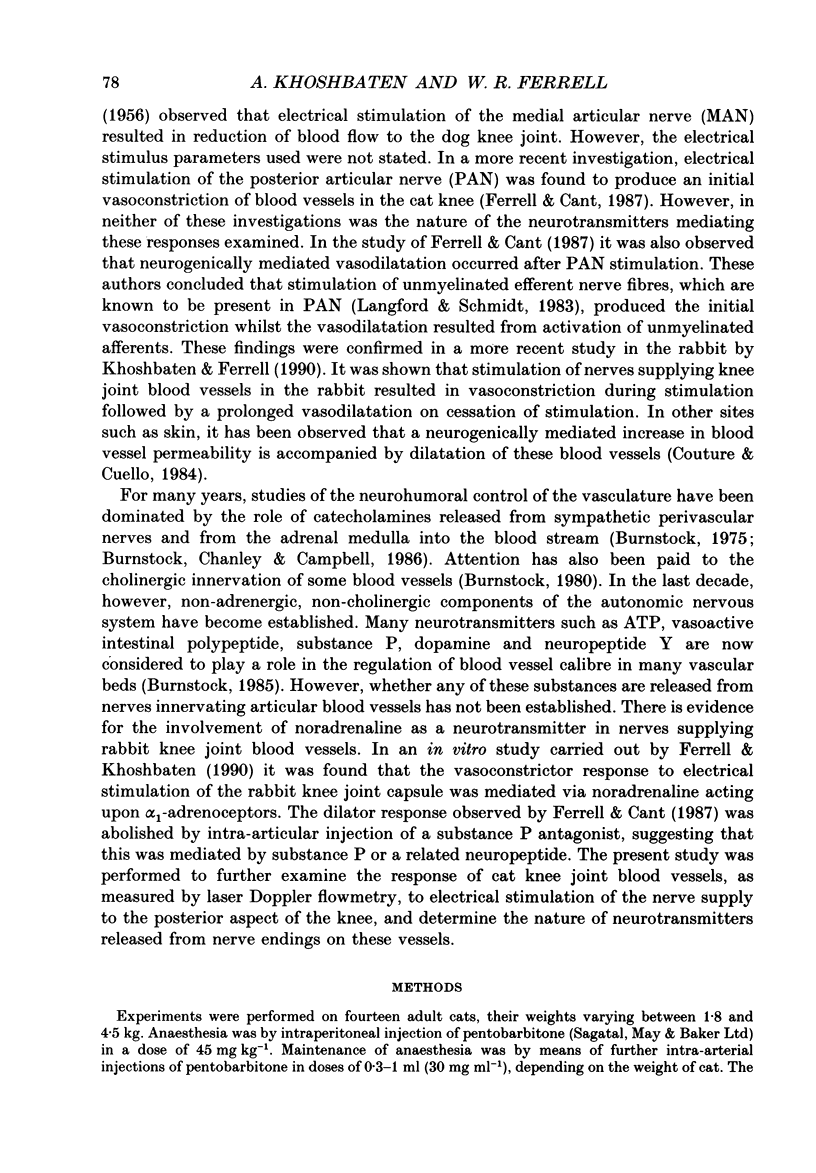
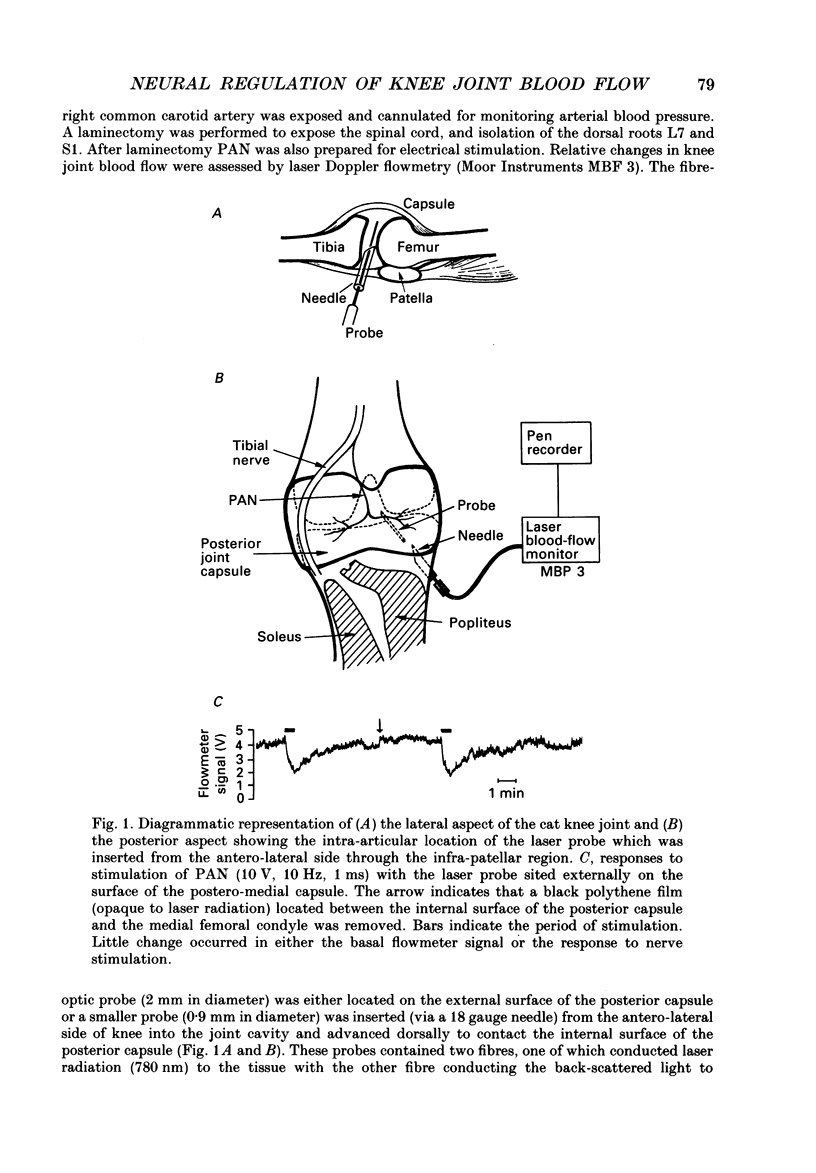
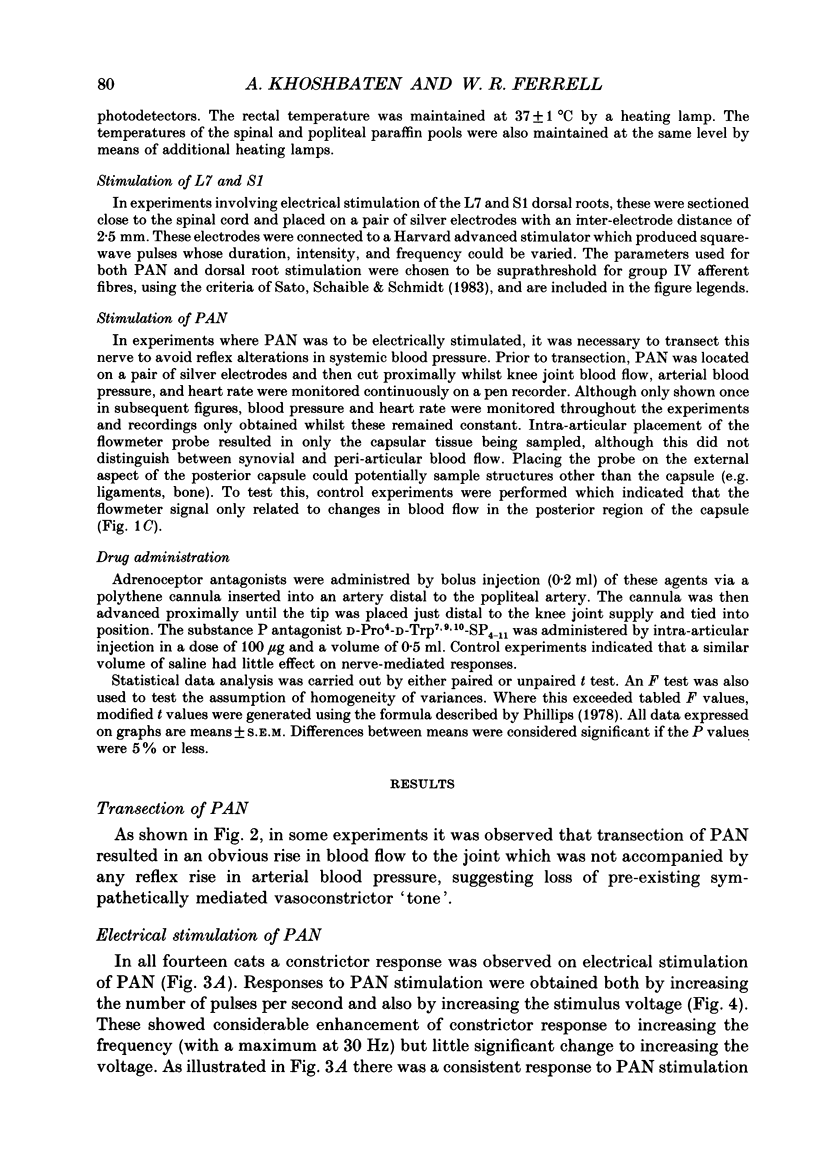
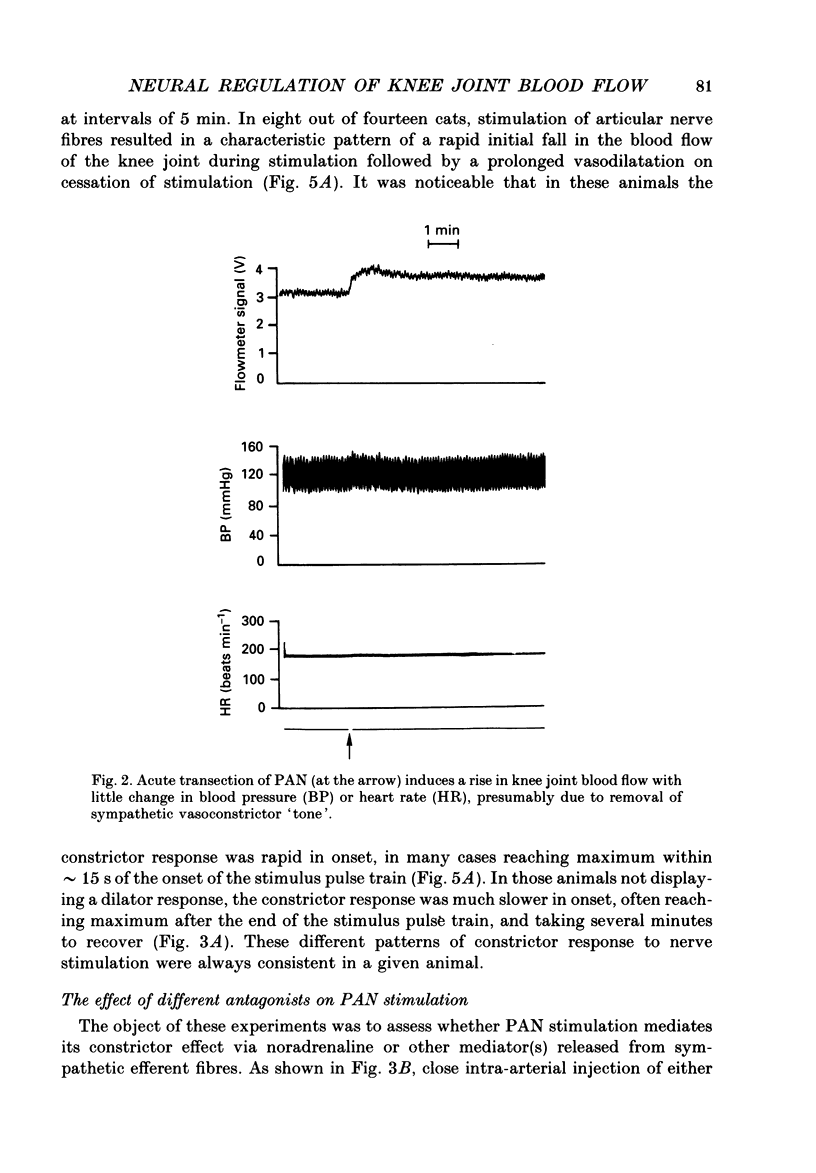
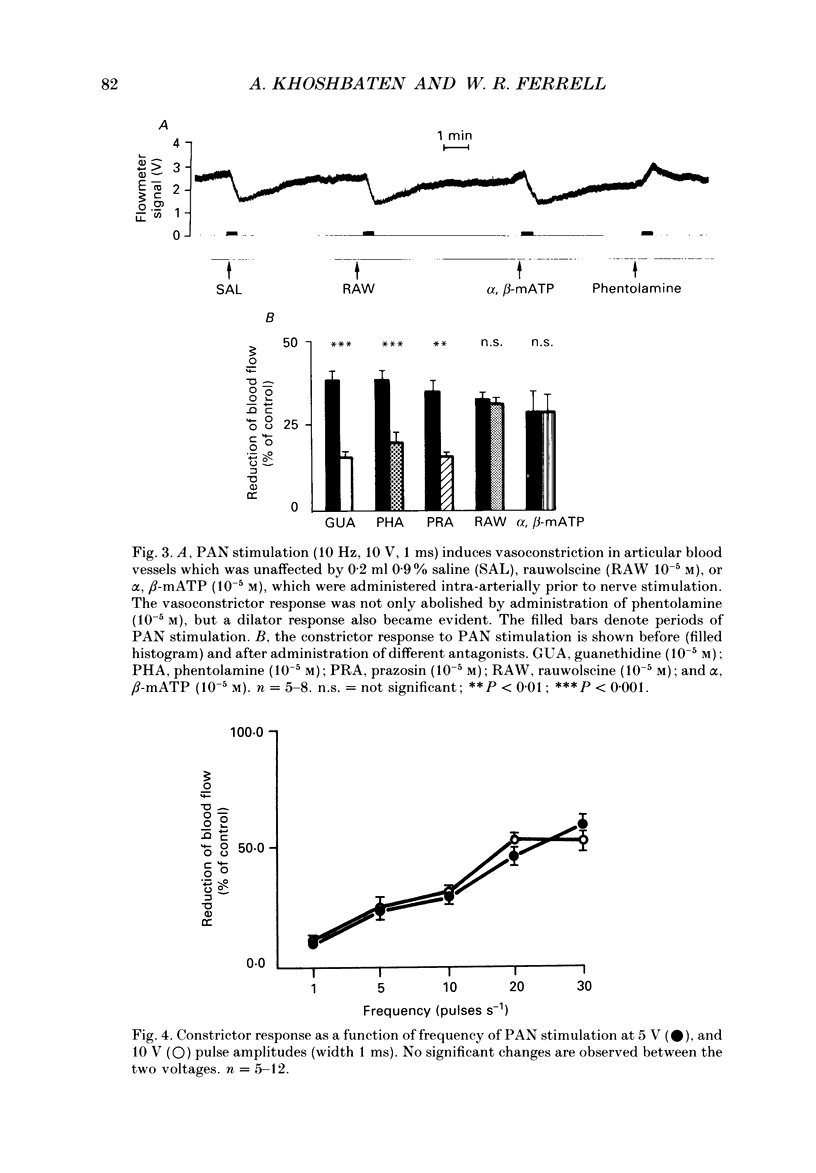
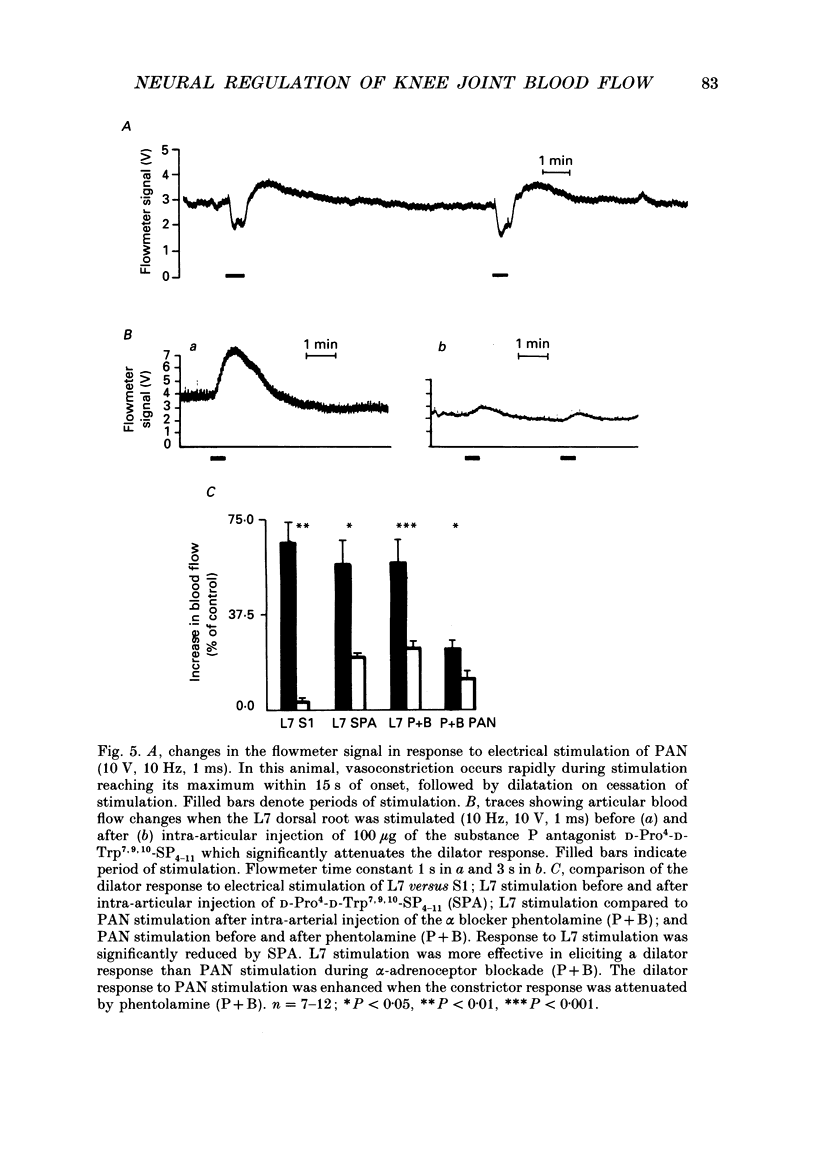

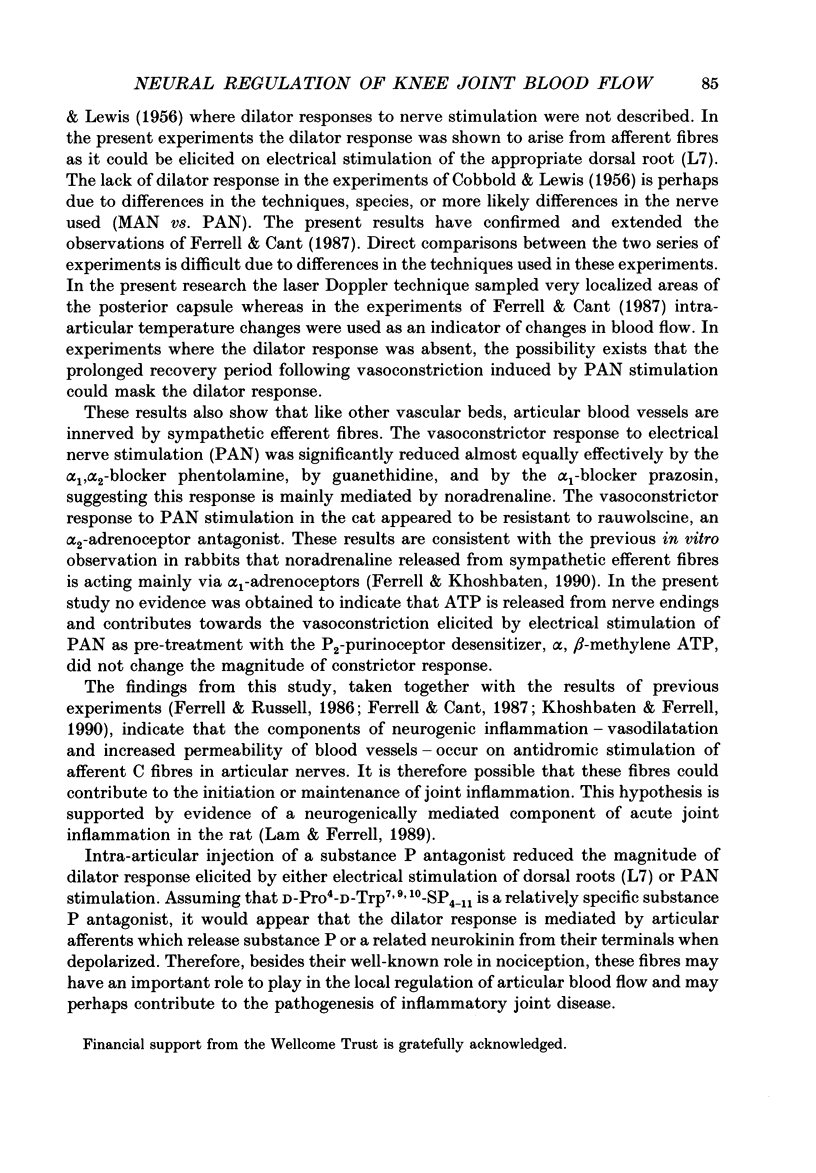
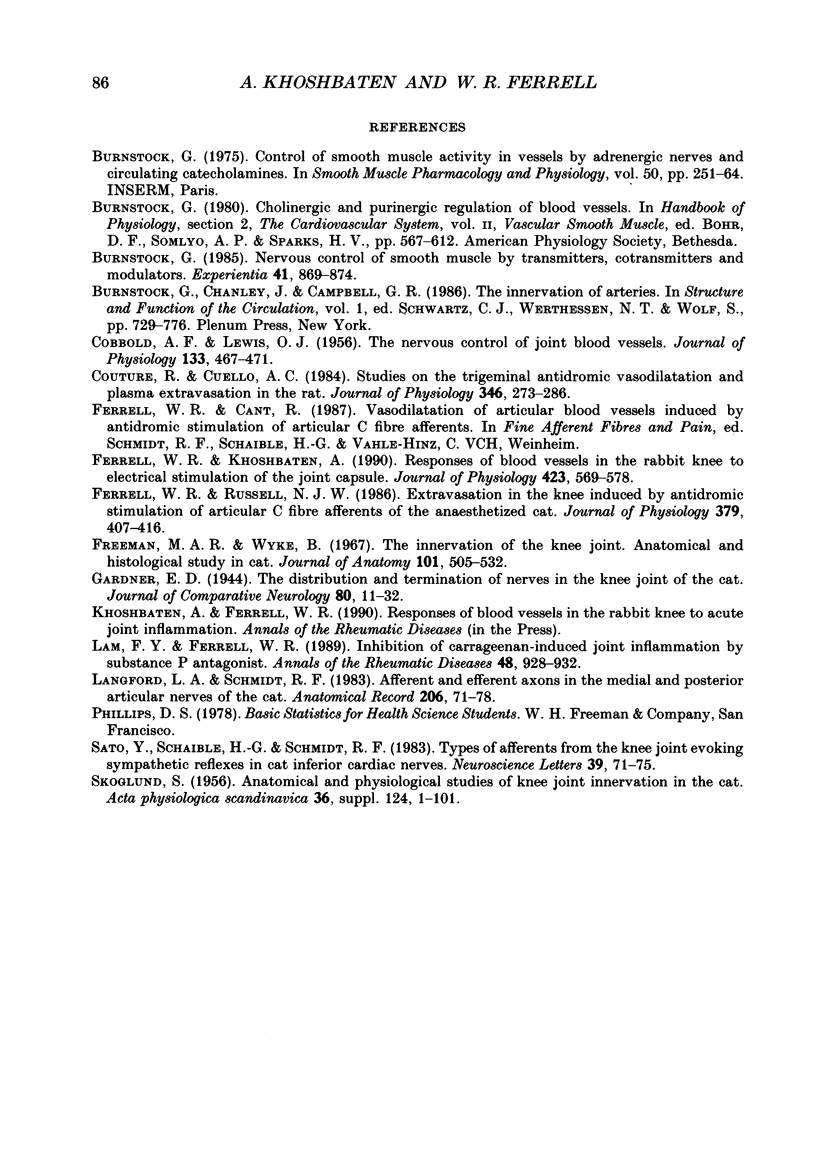
Selected References
These references are in PubMed. This may not be the complete list of references from this article.
- Burnstock G. Nervous control of smooth muscle by transmitters, cotransmitters and modulators. Experientia. 1985 Jul 15;41(7):869–874. doi: 10.1007/BF01970003. [DOI] [PubMed] [Google Scholar]
- COBBOLD A. F., LEWIS O. J. The nervous control of joint blood vessels. J Physiol. 1956 Aug 28;133(2):467–471. doi: 10.1113/jphysiol.1956.sp005601. [DOI] [PMC free article] [PubMed] [Google Scholar]
- Couture R., Cuello A. C. Studies on the trigeminal antidromic vasodilatation and plasma extravasation in the rat. J Physiol. 1984 Jan;346:273–285. doi: 10.1113/jphysiol.1984.sp015021. [DOI] [PMC free article] [PubMed] [Google Scholar]
- Ferrell W. R., Khoshbaten A. Responses of blood vessels in the rabbit knee to electrical stimulation of the joint capsule. J Physiol. 1990 Apr;423:569–578. doi: 10.1113/jphysiol.1990.sp018040. [DOI] [PMC free article] [PubMed] [Google Scholar]
- Ferrell W. R., Russell N. J. Extravasation in the knee induced by antidromic stimulation of articular C fibre afferents of the anaesthetized cat. J Physiol. 1986 Oct;379:407–416. doi: 10.1113/jphysiol.1986.sp016260. [DOI] [PMC free article] [PubMed] [Google Scholar]
- Freeman M. A., Wyke B. The innervation of the knee joint. An anatomical and histological study in the cat. J Anat. 1967 Jun;101(Pt 3):505–532. [PMC free article] [PubMed] [Google Scholar]
- Lam F. Y., Ferrell W. R. Inhibition of carrageenan induced inflammation in the rat knee joint by substance P antagonist. Ann Rheum Dis. 1989 Nov;48(11):928–932. doi: 10.1136/ard.48.11.928. [DOI] [PMC free article] [PubMed] [Google Scholar]
- Langford L. A., Schmidt R. F. Afferent and efferent axons in the medial and posterior articular nerves of the cat. Anat Rec. 1983 May;206(1):71–78. doi: 10.1002/ar.1092060109. [DOI] [PubMed] [Google Scholar]
- SKOGLUND S. Anatomical and physiological studies of knee joint innervation in the cat. Acta Physiol Scand Suppl. 1956;36(124):1–101. [PubMed] [Google Scholar]
- Sato Y., Schaible H. G., Schmidt R. F. Types of afferents from the knee joint evoking sympathetic reflexes in cat inferior cardiac nerves. Neurosci Lett. 1983 Aug 19;39(1):71–75. doi: 10.1016/0304-3940(83)90167-2. [DOI] [PubMed] [Google Scholar]


